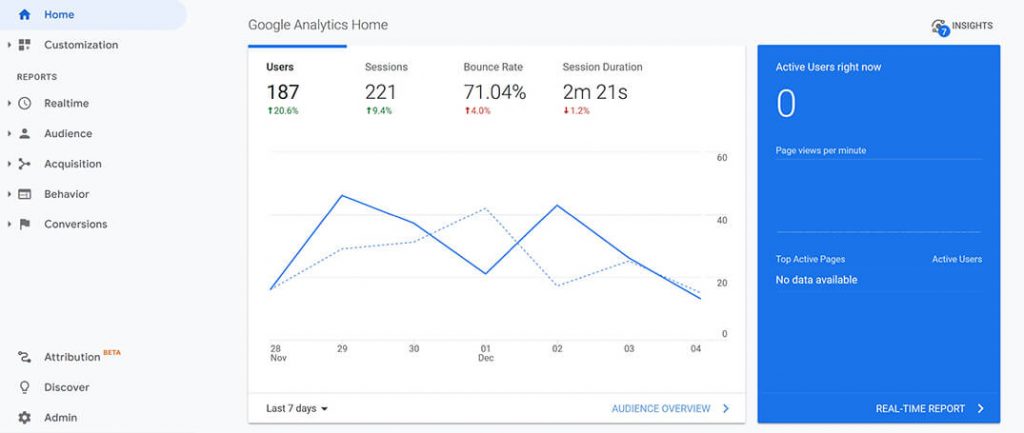Starting a business blog is hard and takes dedication. Whatever space you’re in, your competition is already creating content and getting traffic. They know that blogging is an excellent way to boost your SEO and draw prospects to your website. They saw the value 5, or 10 years ago, and it can be intimidating.
When you write and publish interesting, helpful, and high-quality content it translates to SEO for your website and higher engagement for your business. It also establishes you as an authority in your industry, demonstrating you know exactly what you’re talking about.
You probably won’t see any immediate results after writing your first couple of blog posts. When you’re starting a blog you need to stop comparing yourself, because companies that have been blogging for a while have taken all that time to establish themselves. But it’s never too late to start catching up.
Blogging is an excellent strategy you should not be overlooking. So here are a few helpful tips and tricks for how to start blogging as a business.
First, Determine Your Objectives
If you are blogging because you want more traffic, you’re going to need to be writing about the topics that people are searching for. You can use tools like SEMrush or Ubersuggest to analyze your competitors’ websites and to find search volume for specific keywords or phrases. These tools will show you what’s popular.
You can see competitor’s traffic and what kind of articles are driving their traffic, so you can also create similar ones. Whatever they’ve written, you want to write something that’s far more detailed and valuable so that people think, wow this is amazing, I have to read this or share this. You want to stand out.
But maybe you want to blog because your customers always ask you the same questions and rather than having to answer them every single time, you want to send them your article. If that’s the case, make sure your posts match the questions that your customers are asking that are helping them to convert. A blog can absolutely be a selling resource the same way companies use flyers or tear sheets after a product demo to give the prospect more information.
You might also be going for a thought leadership type of blog. This means you’ll be writing about big topics in your industry, not necessarily questions that prospects/clients are asking you, but your take on specific topics. The goal of this type of blogging is to establish your business as an authority and to get attention.
It’s important to decide your objectives because that’s what’s going to help you stay on track and know what you should be writing about.
Be Consistent
The people that are consistent with it and keep going even if life gets busy or if they’re not seeing results at first are the ones that end up being most successful. Your post quality is just about as important as your consistency. I get it, it’s hard to be consistent, especially as an entrepreneur or business owner, life seems to move in cycles of slow periods then hectic chaos. Use the slow time to build up articles you can post when things get busy.
What are the benefits of being consistent with your blogging?
- You’ll gain trust and credibility with prospects who get your emails or follow your social media
- Search engines will index your new content and boost your site with each new article you share
Watch Your Stats
After you’ve been writing for a while, like half a year, go back and analyze your statistics. If you don’t already have Google Analytics installed on your website, that’s super important to install before you start blogging. It’s such a valuable resource that comes with your Google Suite business email. (If you don’t already have one of those, it’s around $8-12/mo and well worth it).

With Google Analytics, you will be able to see which blogs got the most views in a set period of time, and an average for how long people stayed on each blog. That will help you determine what type of content to keep writing and what’s not so successful.
You’ll be able to put your effort where it’s making a difference and ditch what’s not working.
Visual Consistency
You want someone to see your post on LinkedIn or Facebook, and think, hey it’s another article from So-And-So, I should check it out. Visual consistency helps create this reaction. People will recognize your posts and if they already have read a few of your articles and like your blog, they’ll want to click and read this one too. Using similar imagery when sharing on social helps achieve this recognition. So when you are selecting a featured image for each blog, keep your brand style in mind.
Use consistency within your blog, too. If you look at someone’s blog and you see they always use the same visual styles (images, infographics, etc), it elevates your impression of them. But if you look at another blog and the visuals look random i.e. some are low resolution, some are cartoons, some are photographs, it doesn’t give you a very good perception.
Optimize your Sidebar
Most blogs have a sidebar on the right side of the page where they include things like their bio, links, etc. Optimizing this section is a great way to turn viewers into leads.
Here’s a few examples of sidebars that work really well:


A few things you can include in the sidebar area:
- Company bio or author’s bio with link to your ‘about’ page
- An email-gathering method such as an opt-in form or a free downloadable resource
- Post categories or links to other posts you want people to read
Including a call to action (like a free trial or free demo) in the sidebar is also a great way of turning the visitor into a lead.
Define Your Audience
If you’re writing with a very broad group of people in mind, it can be easy to get off track and talk too generally. However, if you’re writing an entire post with one specific person in mind, as long as that person matches your target audience, that post is going to be very valuable.

To get better at this, talk to your sales team and find out what sort of questions and issues people have. Get to know your customers; interview them if you can. Understand their demographics like age, purchasing habits, motivations, problems, interests. Knowing the sort of language that they use and what motivates them will help you write much better content.
Reach out to our team at De Lu Studios if you’d like consulting about your blog or help adding SEO, figuring out keywords, or deciding on topics!





